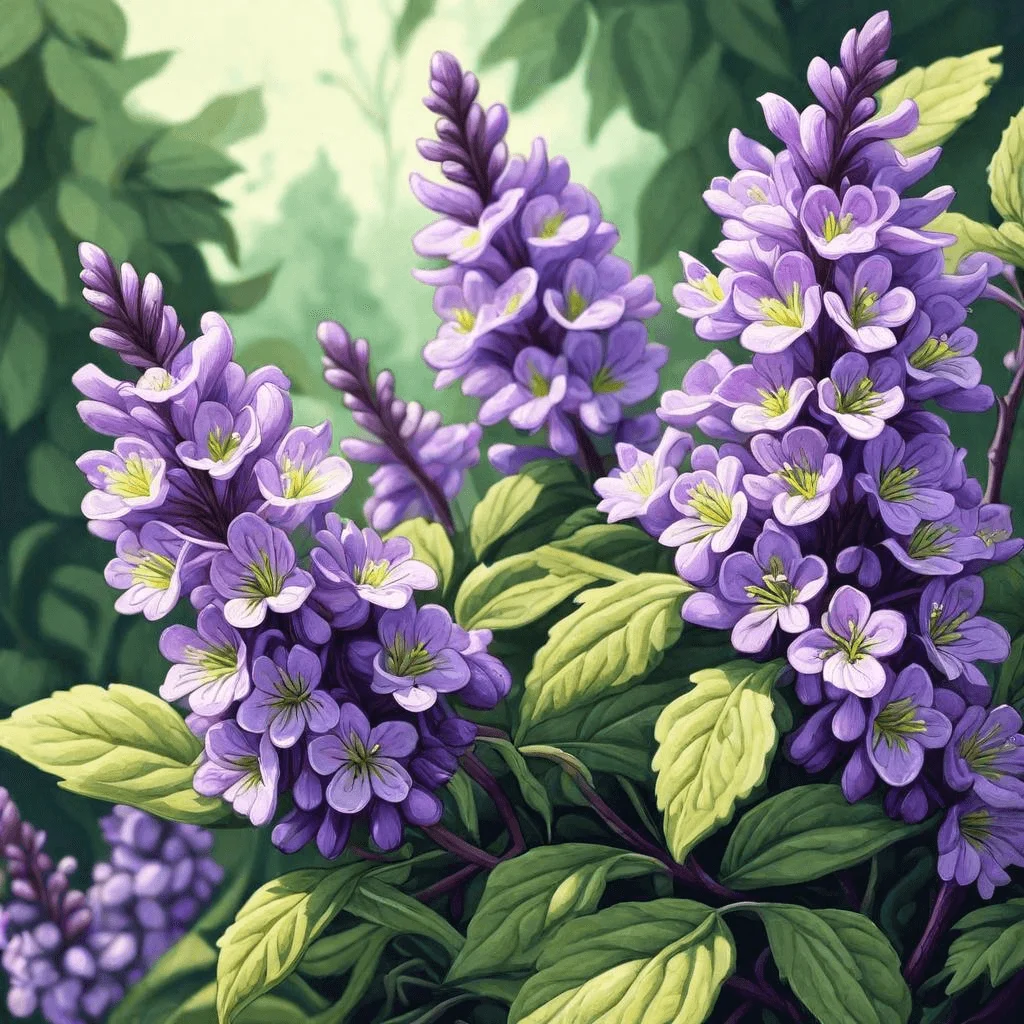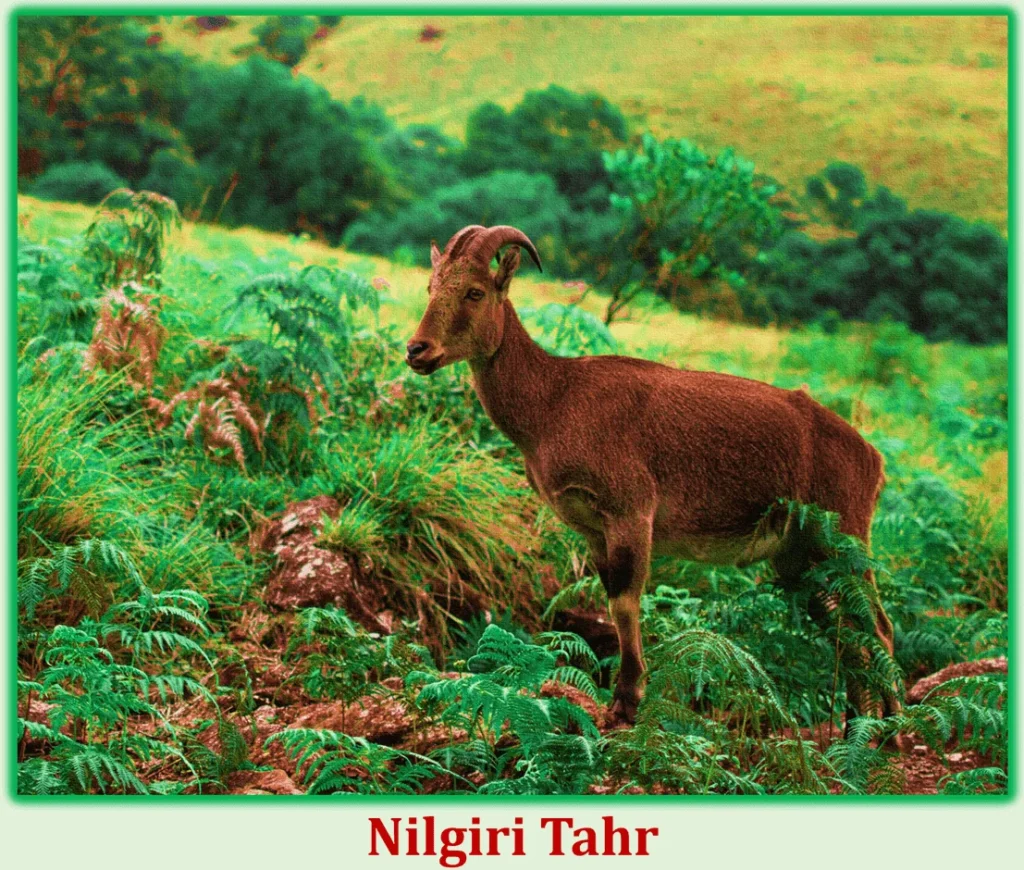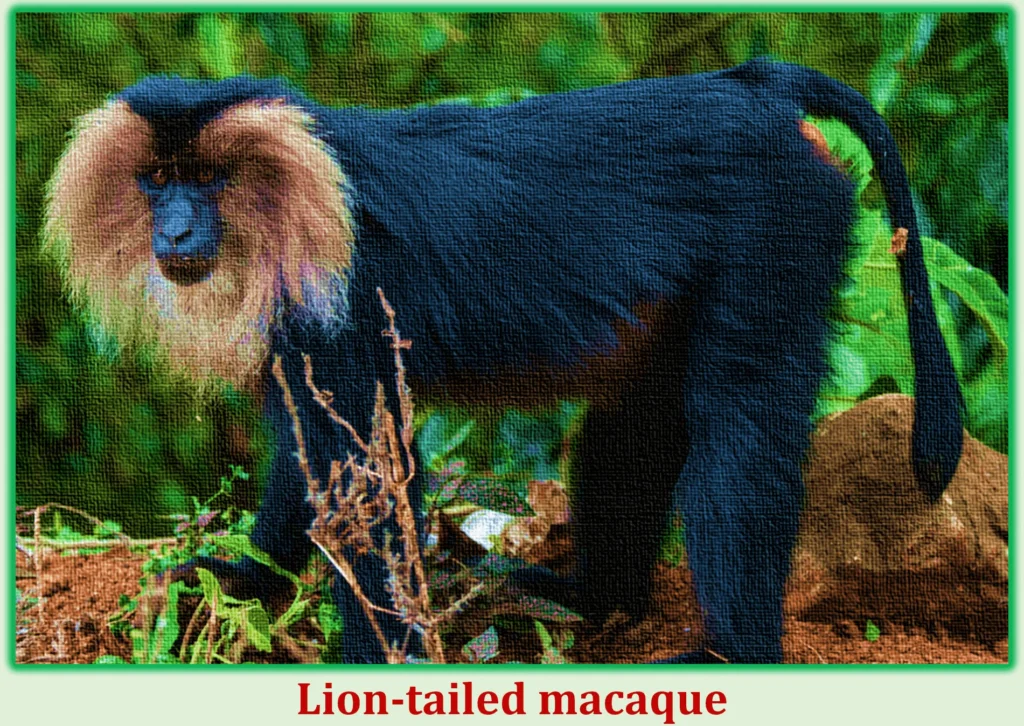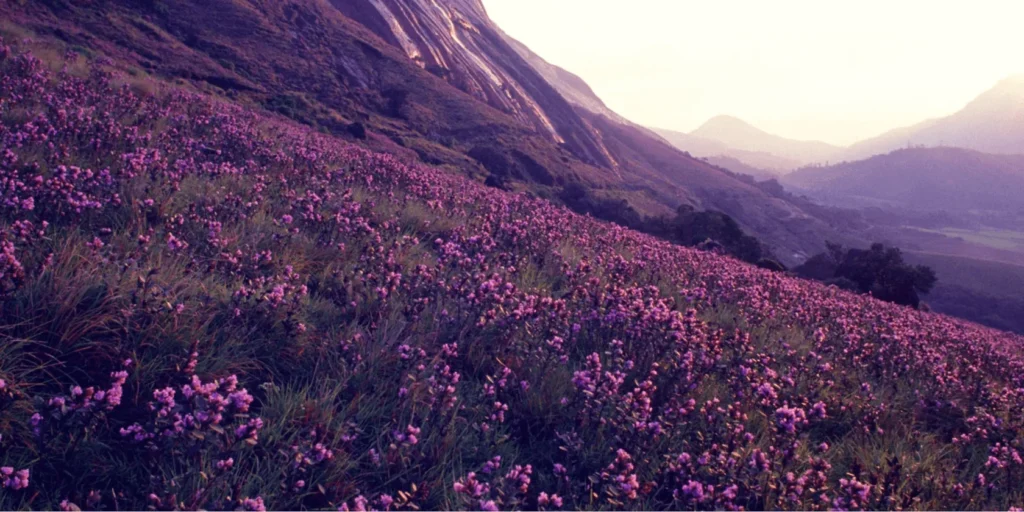
Introduction
Overview of Neelakurinji
Neelakurinji, scientifically known as Strobilanthes kunthiana, is a rare and mesmerizing flowering plant native to the Western Ghats Mountain range in South India. The name “Neelakurinji” translates to “blue flowers” in the local Malayalam language, which aptly describes the stunning bluish-purple blossoms that cover the hillsides once every twelve years.
It is a shrub that typically grows up to 30 to 60 centimeters in height, but it can reach up to 180 centimeters under favorable conditions. It thrives in the high-altitude grasslands and shola forests of the Western Ghats, particularly in the states of Kerala, Tamil Nadu, and Karnataka.
The plant’s blooming cycle is a remarkable natural phenomenon, attracting botanists, researchers, and nature enthusiasts from around the world. It is a sight to behold as entire hillsides are carpeted in a sea of vibrant blue flowers, creating a spectacle that captivates both locals and tourists alike.
History of Neelakurinji
The history of Neelakurinji is deeply rooted in the cultural and ecological heritage of the Western Ghats. Indigenous communities living in the region have long revered the plant for its beauty and significance. However, it was not until the British colonial era that it gained wider recognition.
In 1838, British botanist Robert Wight first documented it during his explorations of the Western Ghats. Since then, scientific interest in the plant has grown, leading to numerous studies and conservation efforts aimed at understanding and protecting this unique species.
Over the years, human encroachment, deforestation, and climate change have posed significant threats to its habitat. Conservation initiatives have been implemented to safeguard the plant and its ecosystem, highlighting the importance of preserving biodiversity in the Western Ghats.
Significance and uniqueness of Neelakurinji bloom
The blooming of it holds immense significance both ecologically and culturally. Ecologically, it plays a vital role in maintaining the biodiversity of the Western Ghats ecosystem. The plant provides food and habitat for various species of insects, birds, and small mammals, contributing to the region’s rich biological diversity.

Culturally, it holds a special place in the hearts of the local communities. Its blooming is often associated with auspicious occasions and festivals, symbolizing renewal and rejuvenation. For generations, indigenous tribes have revered it as a symbol of resilience and harmony with nature.
The uniqueness of the Neelakurinji bloom lies in its rare and sporadic occurrence. The plant follows a cyclical blooming pattern, with mass flowering events occurring once every twelve years. This extended blooming cycle adds to the allure of Neelakurinji, drawing visitors from far and wide to witness this natural spectacle.
The Botanical Marvel
Habitat and distribution
- Native Regions of Neelakurinji: It primarily inhabits the shola-grassland ecosystems of the Western Ghats, particularly in the states of Kerala and Tamil Nadu in Southern India. It thrives at elevations ranging from 1300 to 2400 meters above sea level.
- Environmental Conditions for Growth: This exquisite plant typically grows in moist, rocky slopes with well-drained soil. It is well-adapted to the cool, temperate climate of the Western Ghats, where it experiences moderate temperatures and high humidity levels.
- Threats to its Habitat: The fragile ecosystem of the Western Ghats faces numerous threats, including deforestation, habitat fragmentation, invasive species, and climate change. These factors pose significant challenges to the survival of it and its habitat.
Life cycle and blooming pattern
Frequency of Neelakurinji Flowering
It is famous for its extraordinary blooming cycle, which occurs once every twelve years. This phenomenon, known as “mass flowering,” captivates nature enthusiasts and botanists alike, drawing visitors from far and wide to witness the breathtaking spectacle. This semelparous life event is well recorded with mass flowering incidents documented since 1838.
Impact of Climate on Neelakurinji Blooms
The timing and intensity of its flowering are influenced by climatic factors such as rainfall, temperature, and humidity. Variations in these environmental conditions can affect the duration and abundance of the bloom, highlighting the plant’s sensitivity to its surroundings. It is sensitive to climate change, with the Western Ghats experiencing warming of about 0.8 degrees Celsius in the regions where the plant is grown. This change in climate can affect the flowering cycle and overall health of the plant.
Ecological Importance of Neelakurinji Blooming
The mass flowering of it plays a crucial role in the ecosystem of the Western Ghats. It provides a vital food source for pollinators such as bees, butterflies, and birds, contributing to the region’s biodiversity. Additionally, the periodic blooming cycle allows researchers to study long-term ecological trends and monitor the health of the ecosystem.
Historical and Cultural Significance
Indigenous communities’ reverence for Neelakurinji
It holds a special place in the hearts and traditions of indigenous communities residing in the Western Ghats. For centuries, these communities have revered the plant for its beauty and mystical qualities. The Paliyan tribe, one of the indigenous groups inhabiting the region, has a deep connection with this flower, considering it sacred and associating it with auspicious events and rituals. The Paliyan tribe also uses the flower to calculate age. The Muthuvan tribe in Kerala considering it a symbol of love and romance. The plant has been used by local communities for medicinal purposes, and its honey, known as Kurinjithen, is believed to have medicinal properties.
Legends and folklore surrounding the bloom
Throughout history, it has been the subject of various myths and folklore passed down through generations. One popular legend tells the story of a princess who falls in love with a warrior from a rival clan. As a symbol of their forbidden love, they are transformed into Neelakurinji flowers, destined to bloom only once every twelve years, symbolizing the eternal nature of their love.
Another such story tells of a king who was cursed to turn into a stone, and the only way to break the curse was for a woman to step on him while he was in the form of a flower. The woman did so, breaking the curse, and the flower has been known as the “stone-breaking flower” ever since.
Furthermore, other tale speaks of the mystical powers of it, believed to bring prosperity and good fortune to those who witness its blooming. According to folklore, the sight of the blue-purple carpet of Neelakurinji flowers is said to herald a bountiful harvest and a prosperous year ahead.
Impact on local traditions and festivals
The blooming of it is not just a natural phenomenon but also a cultural event celebrated by the local communities. Indigenous tribes organize traditional ceremonies and rituals to honor the plant and seek its blessings for the well-being of their communities.
Furthermore, it has become a symbol of pride and identity for the people of the Western Ghats, reflected in the inclusion of the plant in local art, literature, and folklore. Its image adorns paintings, sculptures, and handicrafts, serving as a reminder of the region’s rich cultural heritage.
During the flowering season, various festivals and cultural events are held in towns and villages near Neelakurinji habitats, attracting tourists and pilgrims from all over the country. These festivities feature traditional music, dance, and food, creating a vibrant atmosphere of celebration and unity.
Ecological Importance
An indicator of environmental health
It serves as a crucial indicator of the environmental health and biodiversity of the Western Ghats. Its presence in the region signifies the presence of intact ecosystems and relatively undisturbed habitats. As a sensitive species, its well-being is intricately linked to the health of its surrounding environment, making it an invaluable barometer of ecological balance.
The periodic blooming of it provides researchers with valuable insights into long-term environmental trends and changes. By monitoring the timing, duration, and abundance of its blooms, scientists can assess the impact of factors such as climate change, habitat loss, and invasive species on the region’s biodiversity and ecosystem dynamics.
Biodiversity hotspot: Flora and Fauna Associated with Neelakurinji
Plant Species Coexisting with Neelakurinji:
With its distinctive blue-purple blooms, thrives amidst a diverse array of plant species in the Western Ghats, contributing to the region’s rich biodiversity. Here are some of the plant species that coexist with it:
- Kurinji Tree (Vateria indica): The Kurinji tree, after which this plant is named, is a large evergreen tree native to the Western Ghats. It belongs to the family Dipterocarpaceae and typically grows in the same shola-grassland ecosystems where Neelakurinji is found. The Kurinji tree also blooms once in several years, adding to the spectacle of the region’s floral displays.

- Shola Forest Trees: It often grows amidst the unique shola forests of the Western Ghats. These forests are characterized by their stunted, evergreen trees adapted to the high-altitude, montane climate. Species such as Rhododendron arboreum, Syzygium densiflorum, and Michelia nilagirica are commonly found in shola forests alongside Neelakurinji.
- Grasses and Herbs: Its habitat includes grasslands interspersed with a variety of herbaceous plants and grass species. These include species like Eriocaulon species (pipeworts), Strobilanthes species (including other members of the Strobilanthes genus), and various grass species adapted to the cool, moist conditions of the Western Ghats.
- Epiphytic Orchids and Ferns: In addition to ground-dwelling species, its habitats may also host epiphytic plants such as orchids and ferns. These plants grow on the branches of trees, deriving moisture and nutrients from the air and debris accumulated on the tree surfaces. Orchid species like Dendrobium, Vanda, and Aerides, as well as fern species like Asplenium and Polypodium, are often found in the canopy of shola forests.
- Mosses and Lichens: Its habitats provide suitable conditions for the growth of mosses and lichens, which contribute to the overall biodiversity and ecological functioning of the ecosystem. These small, non-vascular plants play important roles in nutrient cycling, soil formation, and moisture retention, enhancing the resilience of the ecosystem.
Animal Species Dependent on Neelakurinji Ecosystem
The Neelakurinji ecosystem in the Western Ghats supports a wide variety of animal species, many of which depend directly or indirectly on the presence of Neelakurinji and its associated vegetation for their survival. Here are some of the animal species that are dependent on the Neelakurinji ecosystem:

- Nilgiri Tahr (Nilgiritragus hylocrius): The Nilgiri Tahr is an iconic mountain goat species native to the Western Ghats. It is well-adapted to the rugged terrain of the region and is often found grazing on the grasses and herbs that grow alongside Neelakurinji. These herbivores play a crucial role in shaping the vegetation structure of the ecosystem through their grazing activities.

- Lion-tailed macaque (Macaca silenus): The Lion-tailed macaque (Macaca silenus) depends on Neelakurinji habitat for food and shelter in the Western Ghats. Its flowering provides crucial resources for the macaques, including nectar and fruits. Conservation of Neelakurinji is vital for the survival of this endangered primate species.
- Elephants (Elephas maximus indicus): Elephants are another keystone species that inhabit the Western Ghats and rely on the diverse vegetation for food and habitat. During the blooming season of Neelakurinji, elephants are known to migrate to higher elevations to feed on the succulent grasses and browse on the foliage of various plant species, including Neelakurinji.
- Birds: The Neelakurinji ecosystem supports a diverse avian community, including both resident and migratory bird species. Birds such as sunbirds, flowerpeckers, and butterflies are attracted to the nectar-rich flowers of Neelakurinji, serving as important pollinators for the plant. Other bird species, such as the Malabar Whistling Thrush and the Nilgiri Flycatcher, inhabit the shola forests and feed on insects and fruits found in the Neelakurinji habitat.
- Insects: Various insect species play essential roles in pollinating its flowers and contributing to the overall ecosystem dynamics. Bees, butterflies, moths, and other pollinators are attracted to the colorful blooms of Neelakurinji, facilitating the transfer of pollen between flowers and ensuring the plant’s reproductive success.
- Mammalian Predators: Carnivores such as leopards (Panthera pardus) and tigers (Panthera tigris) are apex predators that inhabit the Western Ghats and prey on herbivores that graze on it and other vegetation. These predators help regulate herbivore populations, maintaining the ecological balance within the ecosystem.
- Small Mammals: Various small mammal species, including rodents, shrews, and bats, inhabit the Neelakurinji ecosystem and play important roles in seed dispersal, insect control, and nutrient cycling. These animals contribute to the overall biodiversity and ecological functioning of the ecosystem.
The intricate web of interactions between Neelakurinji and its associated animal species highlights the importance of conserving this unique ecosystem. Efforts to protect Neelakurinji must consider the conservation of its dependent animal species and the preservation of their habitats within the Western Ghats landscape.
Conservation efforts and challenges
Despite its ecological significance, it faces numerous conservation challenges due to human activities and environmental threats. Deforestation, habitat fragmentation, illegal logging, and land encroachment pose immediate risks to the survival of it and its associated biodiversity.
Conservation efforts aimed at protecting it and its habitat include the establishment of protected areas, such as national parks and wildlife sanctuaries, where the plant and its associated species are afforded legal protection. Additionally, community-based conservation initiatives, involving local residents and indigenous communities, play a vital role in safeguarding its habitats and promoting sustainable land management practices.
However, conservation efforts face challenges such as resource constraints, inadequate enforcement of environmental regulations, and lack of public awareness about the importance of preserving biodiversity. Addressing these challenges requires a multi-faceted approach involving government agencies, non-governmental organizations, researchers, and local communities working together to conserve Neelakurinji and its fragile ecosystem for future generations.
The Magical Experience of Witnessing Neelakurinji Bloom
Best viewing locations in the Western Ghats

- Eravikulam National Park, Kerala: Known for its breathtaking landscapes and diverse flora and fauna, Eravikulam National Park is one of the best places to witness the mass flowering of Neelakurinji. The park’s Rajamalai hills transform into a sea of blue-purple blooms during the flowering season, offering stunning panoramic views.
- Kolukkumalai, Tamil Nadu: Situated at high altitudes near Munnar, Kolukkumalai offers a mesmerizing vantage point to witness the Neelakurinji bloom. Visitors can embark on guided treks or jeep safaris to explore the rugged terrain and enjoy panoramic views of the flowering hillsides.
- Anamudi Peak, Kerala: As the highest peak in South India, Anamudi offers an unparalleled vantage point to witness the spectacle of Neelakurinji blooming across the Western Ghats. Treks to Anamudi Peak provide visitors with an opportunity to immerse themselves in the pristine beauty of the Neelakurinji habitat.
Timing and duration of the bloom
The flowering of Neelakurinji occurs once every twelve years, creating a rare and magical spectacle in the Western Ghats. The exact timing of the bloom varies slightly from year to year but generally occurs between the months of July and October. The bloom typically lasts for a few weeks, during which the hillsides are adorned with millions of blue-purple flowers, painting the landscape in vibrant hues.
Tourist Attractions and Activities during Bloom
- Guided Trekking Tours: Experienced guides lead visitors on guided trekking tours through Neelakurinji habitats, offering insights into the plant’s ecology and cultural significance. Trekking routes traverse picturesque landscapes and provide opportunities for wildlife sightings.
- Photography Expeditions: Its blooming season attracts photographers and nature enthusiasts from around the world, offering endless opportunities for capturing stunning images of the floral spectacle against the backdrop of the Western Ghats’ mist-covered hills.
- Cultural Festivals: Local communities organize cultural festivals and events to celebrate the Neelakurinji bloom, featuring traditional music, dance, and cuisine. These festivities provide visitors with a glimpse into the rich cultural heritage of the region and offer opportunities to interact with local communities.
Sustainable Tourism Practices for Preserving Neelakurinji
- Responsible Visitor Behavior: Visitors are encouraged to follow designated trails, avoid trampling on delicate vegetation, and refrain from littering to minimize their ecological impact on Neelakurinji habitats.
- Supporting Local Communities: By patronizing local businesses, staying in eco-friendly accommodations, and participating in community-based tourism initiatives, visitors can contribute to the sustainable development of Neelakurinji-affected areas and support local livelihoods.
- Educational Outreach: Awareness campaigns and interpretive signage can educate visitors about the ecological significance of Neelakurinji and the importance of conservation efforts. These initiatives empower visitors to make informed choices and actively participate in preserving this botanical marvel for future generations.
Neelakurinji in Art and Literature
Depictions in paintings, poetry, and other forms of art
It has been a prominent subject in various forms of art, inspiring painters, poets, and artists to capture its beauty and significance. The stunning blue-purple blooms of the Neelakurinji have been depicted in paintings, showcasing the unique landscape of the Western Ghats during the flowering season. Poets have used the Neelakurinji as a symbol of love, yearning, and happiness in their works, drawing parallels between the flower’s rare bloom and human emotions.
Inspirations for literature and music
Its flower has been a muse for many writers and musicians, with its 12-year blooming cycle and vibrant colors serving as a source of inspiration. In literature, the flower has been symbolically linked to themes of self-awakening, love, and the eternal union of lovers, as seen in the Kuruntokai, a Tamil classic poetic work. Musicians have also drawn inspiration from the beauty of the Neelakurinji, incorporating its imagery and symbolism into their compositions.
Pop culture references
While Neelakurinji may not be as ubiquitous in pop culture as some other natural wonders, it has made occasional appearances in films, documentaries, and popular media. Its unique blooming cycle and stunning visual appeal have occasionally been featured in travel shows and documentaries, drawing attention to the plant’s ecological significance and cultural importance.
Conclusion & FAQs
Neelakurinji, with its rare and breathtaking mass flowering, holds immense ecological, cultural, and aesthetic significance. As a symbol of resilience and natural beauty, it captivates the imagination and inspires awe in all who witness its blooming spectacle.
The conservation of Neelakurinji and its fragile ecosystem is paramount to ensure its continued existence for future generations. It is imperative for authorities, communities, and visitors to prioritize conservation efforts and embrace responsible tourism practices to safeguard this botanical marvel and its associated biodiversity.
In a world marked by rapid urbanization and environmental degradation, Neelakurinji stands as a testament to the enduring power and resilience of nature. Its timeless allure reminds us of the intrinsic beauty and value of the natural world, urging us to cherish and protect it for generations to come. As we marvel at the sight of Neelakurinji in bloom, let us also recommit ourselves to preserving the delicate balance of our planet’s ecosystems and nurturing the wonders of biodiversity that enrich our lives.
Frequently Asked Questions (FAQs)
What is Neelakurinji, and why is it famous?
Neelakurinji (Strobilanthes kunthiana) is a rare and unique flowering plant native to the Western Ghats of India. It is famous for its mass blooming phenomenon, which occurs once every twelve years, covering the hillsides in a stunning carpet of blue-purple flowers.
When does Neelakurinji bloom?
Neelakurinji blooms once every twelve years, typically between the months of July and October. The exact timing of the bloom may vary slightly depending on environmental conditions and other factors.
Where can I see Neelakurinji in bloom?
Neelakurinji can be seen in bloom in several locations in the Western Ghats, including the Eravikulam National Park in Kerala, Kolukkumalai in Tamil Nadu, and Anamudi Peak. These areas offer breathtaking views of the flowering hillsides during the blooming season.
What is the significance of Neelakurinji in Indian culture?
Neelakurinji holds significant cultural and ecological importance in India. Indigenous communities revere the plant for its beauty and mystical qualities, while it also serves as an indicator of environmental health in the Western Ghats.
Is Neelakurinji endangered?
While Neelakurinji is not currently classified as endangered, its habitat is under threat due to factors such as deforestation, habitat fragmentation, and climate change. Conservation efforts are crucial to ensure the survival of Neelakurinji and its associated biodiversity.
Can I visit Neelakurinji habitats?
Yes, visitors can explore Neelakurinji habitats during the blooming season. However, it is important to follow designated trails, respect local regulations, and practice responsible tourism to minimize impact on the fragile ecosystem.
What activities can I do during the Neelakurinji bloom?
Visitors can enjoy activities such as guided trekking tours, photography expeditions, and cultural festivals during the Neelakurinji bloom. These experiences offer opportunities to immerse yourself in the natural beauty and cultural heritage of the Western Ghats.
How can I contribute to the conservation of Neelakurinji?
You can contribute to the conservation of Neelakurinji by supporting local conservation initiatives, practicing responsible tourism, and raising awareness about the plant’s ecological importance. By making sustainable choices and respecting the environment, you can help protect this natural wonder for future generations.
